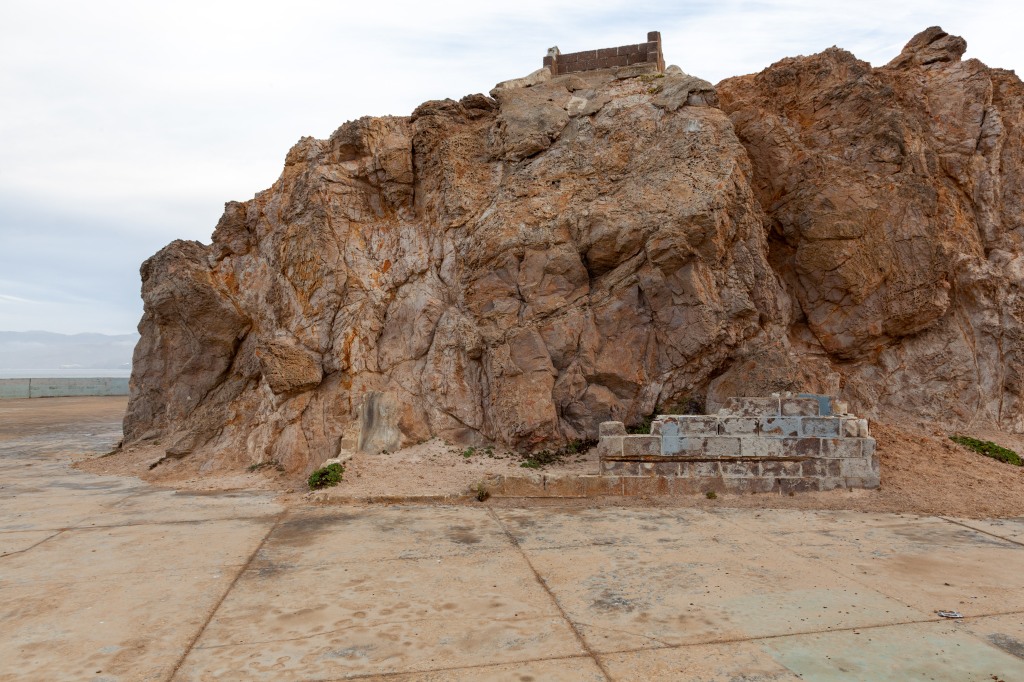There is an ornate stone pedestal atop a now overgrown summit in San Francisco. This peak is named Mount Olympus and is located roughly in the center of the city. It was not always so dense and jungly. In fact, it was once visible from almost anywhere in the city. It also boasted impressive views from its zenith.
The pedestal was once the domain of a statue given to the city of San Francisco by a man named Adolph Sutro. The hill and the land surrounding it belonged to Sutro and he had commissioned a recreation of a sculpture by Antoine Weirtz – a Belgian artist who created “Goddess of Liberty” which featured the deity wielding a sword in one hand (which she was using to battle off evil in human form), and a torch in the other. The goddess’ likeness was twelve feet high. Sutro christened it “Triumph of Light”.
Thanksgiving Day, November 24, 1887, there was a ceremony atop Mount Olympus to dedicate this monument. Guests at the event were apprised of the following:
“The Monument, with a square of ground one hundred feet each way, is the gift of Adolph Sutro to the People and City of San Francisco . . . Time will spread the city to its base. Within a few decades it will be the center of life and stir. Old men will sit to rest on its steps, and playful children climb to the summit. Generations will fade away, and still that monument will Dally with the wind, and scorn the sun. Yet, while a semblance of its shape remains, the name of Adolph Sutro will linger in the memory of man. Children shall ask: Who built this Monument? And old men shall answer, Adolph Sutro, a pioneer of this fair land, a successful miner, a joyous free American Sovereign, a lover of Light and Liberty, that for all time those who live at its feet may be like him, and love them too!”
Sutro hoped that “Triumph of Light” would inspire San Franciscans to do “good and noble deeds” that would ripple through the community and benefit mankind.
Time has passed, and the city has encroached up to the monument’s base, nearly consuming it. Left forgotten, and nearly destroyed by vandals, Sutro’s celebrated gift was ultimately removed to make way for some of San Francisco’s most valuable real estate.
Not many people are aware of the contributions Sutro made to San Francisco. Today, as we observe the corporate greed and corruption that abounds in the area, it’s very important to pause and take note of a how Sutro put his wealth to use. His contributions include:
- Remodeling The Cliff House (also known as the “Gingerbread Palace”) after it was destroyed by fire
- Constructing the Sutro Baths (where most of my photos were taken)
- Contributing to the creation of the streetcars that were used to go down Geary Street to the beach
- Planting the trees that are growing on Mt. Sutro and the Presidio
- He was very generous toward the poor and common working families. The Cliff House and Sutro Baths were not built for the wealthy, but for working families to have a cheap and fun place to spend the weekend
- Opening the grounds and gardens surrounding his long-gone home overlooking the Cliff House to the public. He constructed them in a style similar to gardens found around stately European mansions. His intentions were to edify the public, since most people in that time could not afford a Grand Tour of Europe.
The tragic part of all of this is, just like the “Triumph of Light”, most of what Sutro built has been expunged. His home on the bluffs of Sutro Heights, the gardens, Sutro baths and adjoining facilities – They are all gone. The pedestal, the ruins and the trees are all that remain.
Despite this misfortune, I find beauty in Sutro’s intentions and I often think of him and his generous spirit. How I would have loved to go swimming in the baths or walk in his conservatory of flowers! Nevertheless…I am off to “do good and noble deeds”!





Beautiful!!!
LikeLike